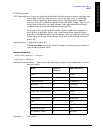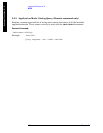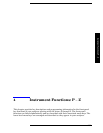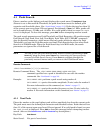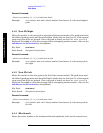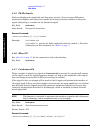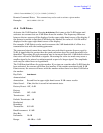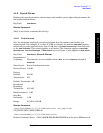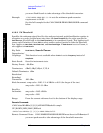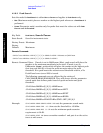
Chapter 4 213
Instrument Functions: P - Z
Peak Search
Instrument Functions: P - Z
:CALCulate:MARKer[1]|2|3|4:CPEak[:STATe]?
Remote Command Notes: This command may not be used to activate a given marker.
Example: CALC:MARK:CPE ON
4.1.8 N dB Points
Activates the N dB function. Pressing N dB Points (On) turns on the N dB feature and
activates two arrows that are N dB down from the marker. The frequency difference
between the two arrows will be displayed in the upper right-hand corner of the display. If
the feature is unable to find data N dB below the marker, the value of –100 Hz will be
displayed in the upper right-hand corner of the display.
Forexample,NdBPointscanbeusedtomeasurethe3dBbandwidthofafilterina
transmission test with the tracking generator.
The measured signal cannot have more than one peak that is greater than or equal to
N dB. A signal must be greater than the peak excursion above the peak threshold to be
identified. The setting for peak excursion may be increased from the –6 dB default value so
that noise will not be identified as signals. Increasing the value too much may cause a
smaller signal to be missed or misinterpreted as part of a larger signal. The amplitude
scale may be either linear or logarithmic.
The N dB function follows the active marker. If you turn on a marker after N dB Points has
been activated, the arrows will follow that marker. If the marker associated with N dB
Points moves, the arrows will move with the marker unless there is no data N dB below
the marker.
Key Path:
Peak Search
Annunciation/
Annotation: Second line in upper right-hand corner N dB <meas result>
State Saved: If
On, the fact is saved in instrument state.
Factory Preset: Off, −3dB
Factory
Default: Off, −3dB
Terminators: dB
Default Terminator: dB
Resolution/
Rounding/
Truncation: 0.01 dB
Knob Increment: 0.1 dB
Step Key
Increment: 10 dB
Range: −80 dB to −1dB



